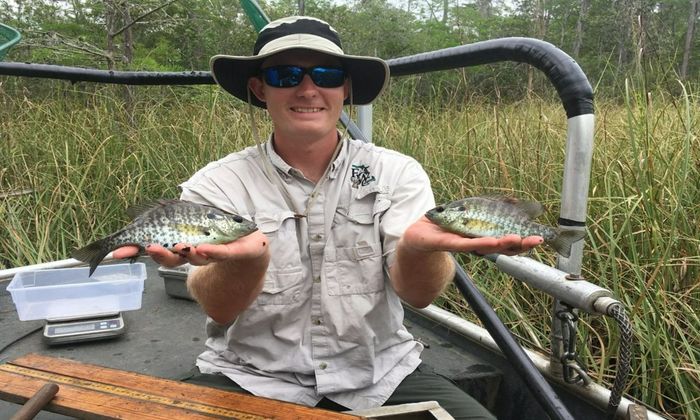5 Tips for Successful Redear Sunfish Fishing
Check out these five tips you need to know to successfully catch redear sunfish.

Redear sunfish are the second most sought-after freshwater game fish in their family, after bluegill. Because shellcracker bream are larger and more elusive than other panfish, they present a greater challenge to anglers. Unlike their cousins (longear sunfish, green sunfish, and redbreast sunfish), they prefer to settle in deeper waters and feed on different forage.

Fishing for shellcrackers and other bream species can be one of the most fun experiences when you are angling in freshwater. If you remember the first fish you’ve caught, it was probably a sunfish. They are prolific and common in almost all freshwaters, making them a great game and practice targets.
Whether you're learning to fish for the first time or looking to improve your skills, here's what you need to know to catch more redear sunfish:

1. Look Up Their Location
Go online and look up information to give yourself a good starting point on where you might find shellcrackers in your local area. To get better location-specific results, try adding ‘forum’ to your search keywords to have good insight from resident anglers.
Redear sunfish are some of the most far-reaching freshwater targets in the country. You can even find them in areas where they are not native. You’ll be able to have excellent shellcracker fishing in southeast states where they are indigenous and are more prevalent. Knowing whether they like to gather in shallow water, or swim around in deeper water can be helpful. Look up where to find larger fish if you're planning to bring home a prized catch.
If you’ve managed to find a fishing spot, try to find redear sunfish where the waters are calm. They don’t like strong water movements. They also usually frequent deeper waters or the bottom of the water pre and post-spawning season because that’s where their forage is. Shellcrackers also like areas where there is vegetation and hard or softcover. If you see structures and covers such as treetops, stumps, logs, grass, or lily pads, there might be some concentrations of fish holding there.
Spotting bluegill, especially big bluegill, is also a good indicator that there may be shellcrackers around. If an angler finds an area where waters are more brackish, you might spot some because they can tolerate salty waters more than their cousins.
During the spawning season, redear sunfish can be found in water depths of three feet or more because that’s where they set up spawning beds. Submerged hardcovers like stumps are also excellent spawning spots to look out for.
Lake Havasu is a popular redear sunfish fishing spot that also holds other notable species like largemouth bass, striped bass, channel catfish, blue catfish, and flathead catfish. Heavy redears have been recorded from the lake.

2. Pick the Best Time
Shellcrackers, like most other fish, are best targeted during their spawning season, which takes place in the spring. The bad news is that their spawning season is only open for a limited time. They move to and are found in deeper areas before or after spawning, making them more challenging targets. Start looking for them in March or April. You can cast your line from spring to early summer in a broader sense. Determine when bluegill spawn and then look for redear sunfish a month earlier.
If a freshwater body in your area is between 70-74 degrees Fahrenheit, there’s a good chance of spotting the fish. It’s because that temperature range provides the best fishing conditions. Fall fishing and ice fishing for redears are still possible, but they might not deliver the best results.
3. Use the Best Baits
Redear sunfish are bottom feeders that usually feed on mollusks and small fish in their adulthood. Go for natural baits like worms, crickets, grasshoppers, grass shrimp, and even cut-up fish. Avoid using artificial lures and baits because they won’t be as effective as organic ones.
As much as possible, keep your baits small. If you are not getting the strikes you want, try upsizing your offering, letting you see more bites. If you’re adamant about using fake baits, use a variety of them because redear sunfish are unlikely to strike again if you use the same one repeatedly.
4. Have the Right Water Setup
Anglers will tell you that there isn’t a ‘best rig’ when fishing for bream due to how varied they are. Here are some setups and gears you should consider using depending on the circumstances:
- For Clear Water
Redear sunfish thrive in waters with relatively good clarity; therefore, you need a stealthy approach. A six to seven-inch light action rod with a spinning reel spooled with a two to four-pound line can help you achieve the subtle approach you need to cast in clear water. Pair that rig with a #2 hook with a half worm, and you’re all set. Don’t use fishing lines that are too large and visible. You can always use a weighted leader line if it’s not heavy enough to penetrate the water’s surface.
- For Stained Water
You can get away using cane poles or a crappie jigging rod in duller or discolored waters. Configurations, where you need to swing your bait out to the target zone, can be an efficient way to fish in those waters, especially when fishing nearby.
- Needed Tackle
Avoid having extra tackle in your rig. You can go a long way with just a tiny hook and a worm. Unless necessary, don’t use a sinker or a bobber. If you’re using sinkers, place them above the hook and drag your rig along the bottom. Bobbers can be a visual indicator if you have a bite rather than a suspension device. When fishing for shellcrackers, you might need to have stringers and storage like coolers if you want to bring some home and eat them.
Make It Fun
In the rare situation you spot some redear cruising along with shallow areas, most likely during spawning season, make it fun by sight fishing. Pitch your bait under a tree limb to try and lure them. Using live bait or flies is a fun option as well. This approach allows you to observe the fish’s behavior and see how many of them can fall for your tricks.
Successful redear sunfish fishing can be done in a multitude of ways. If you remember the basics and have a few tricks up your sleeve, you may find that you’ve caught your next meal.



